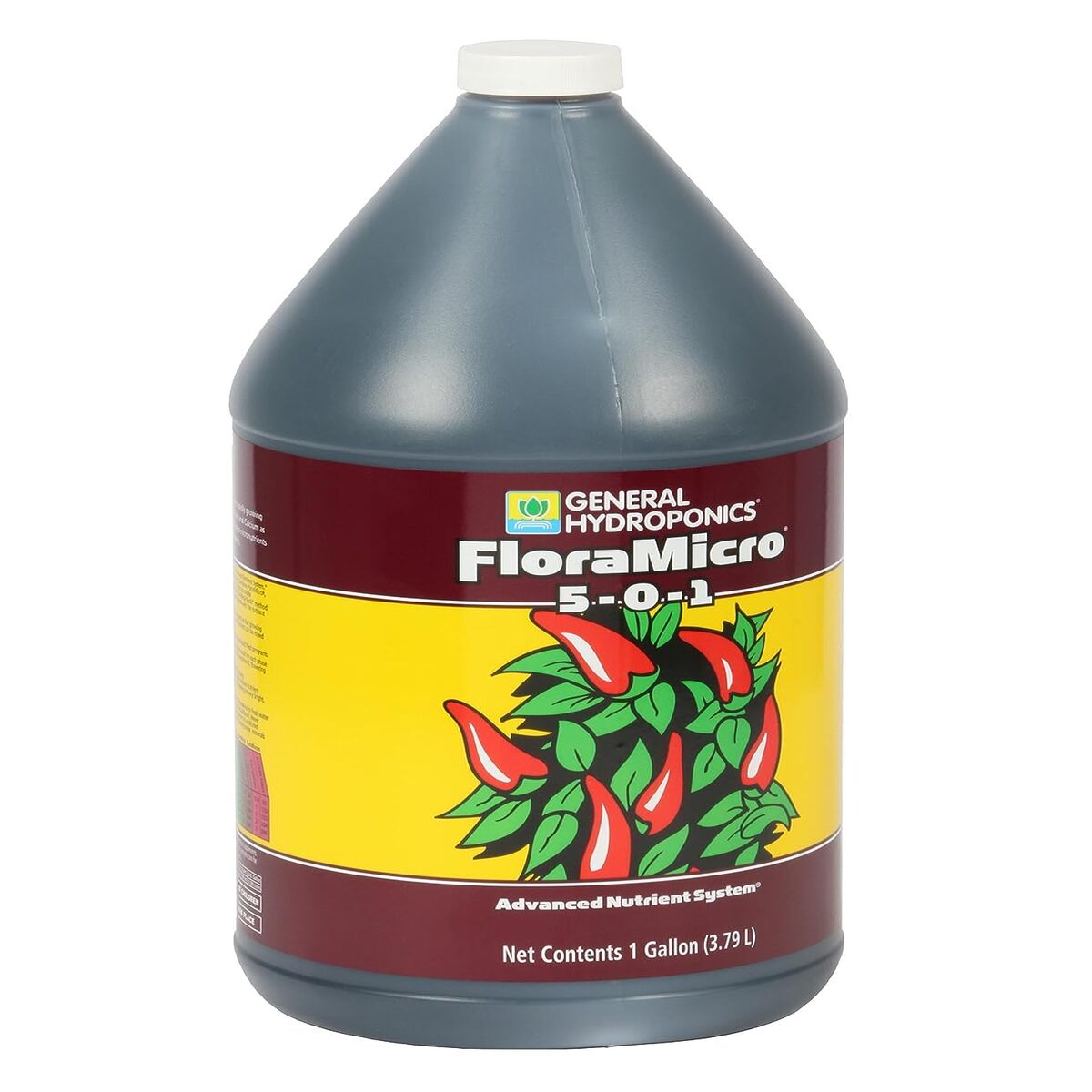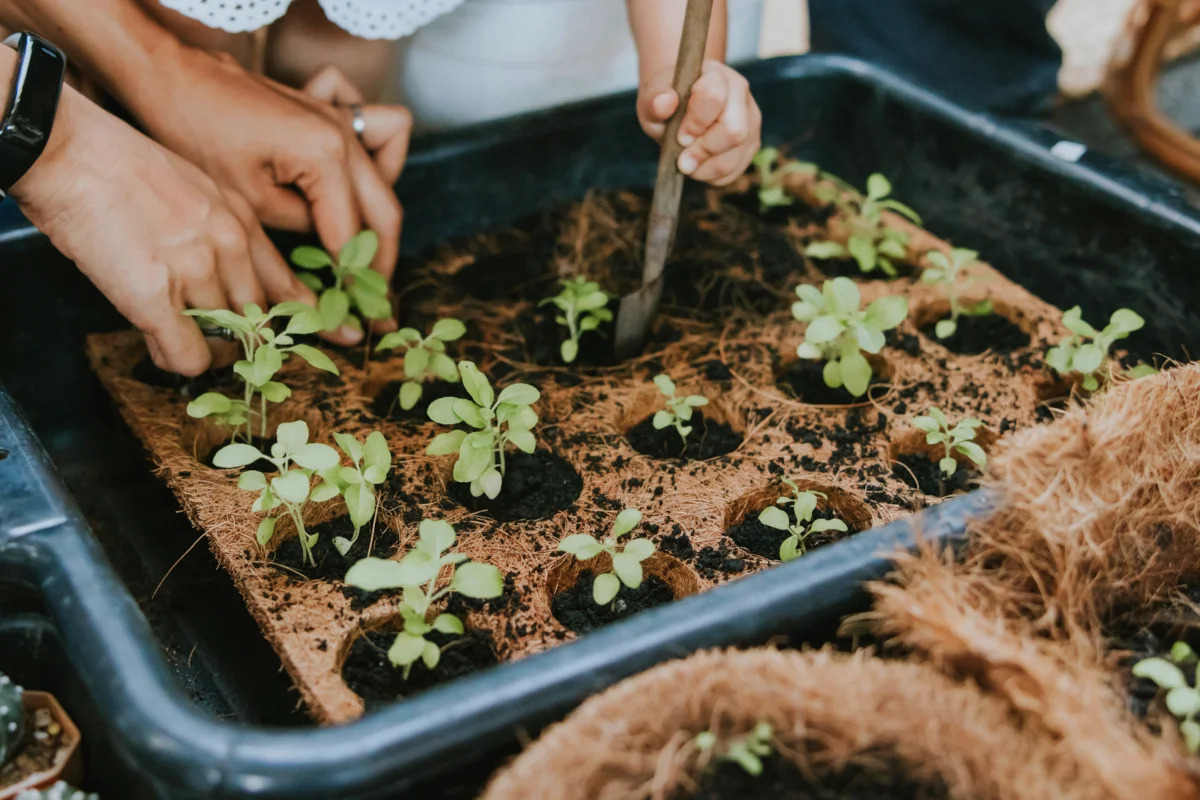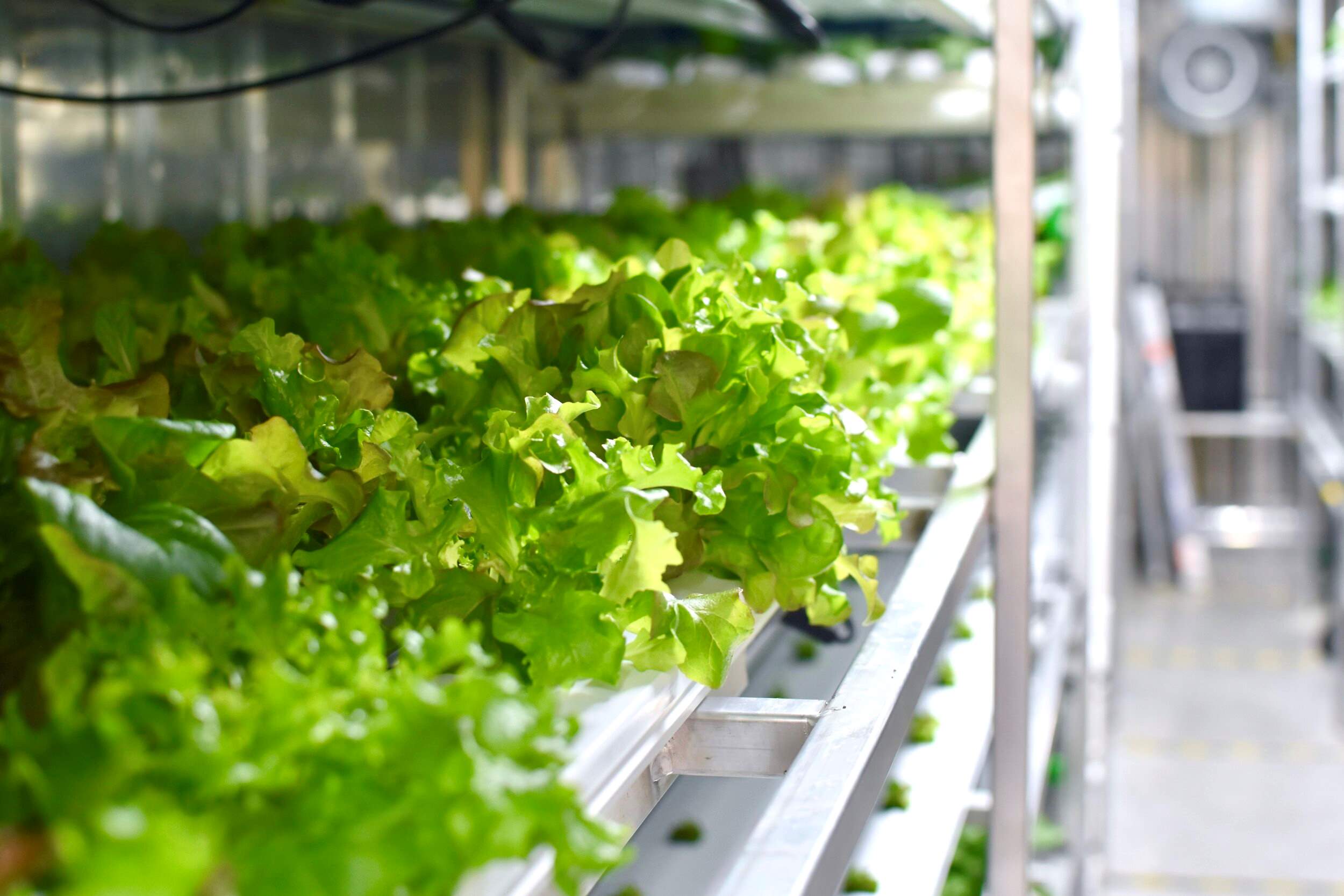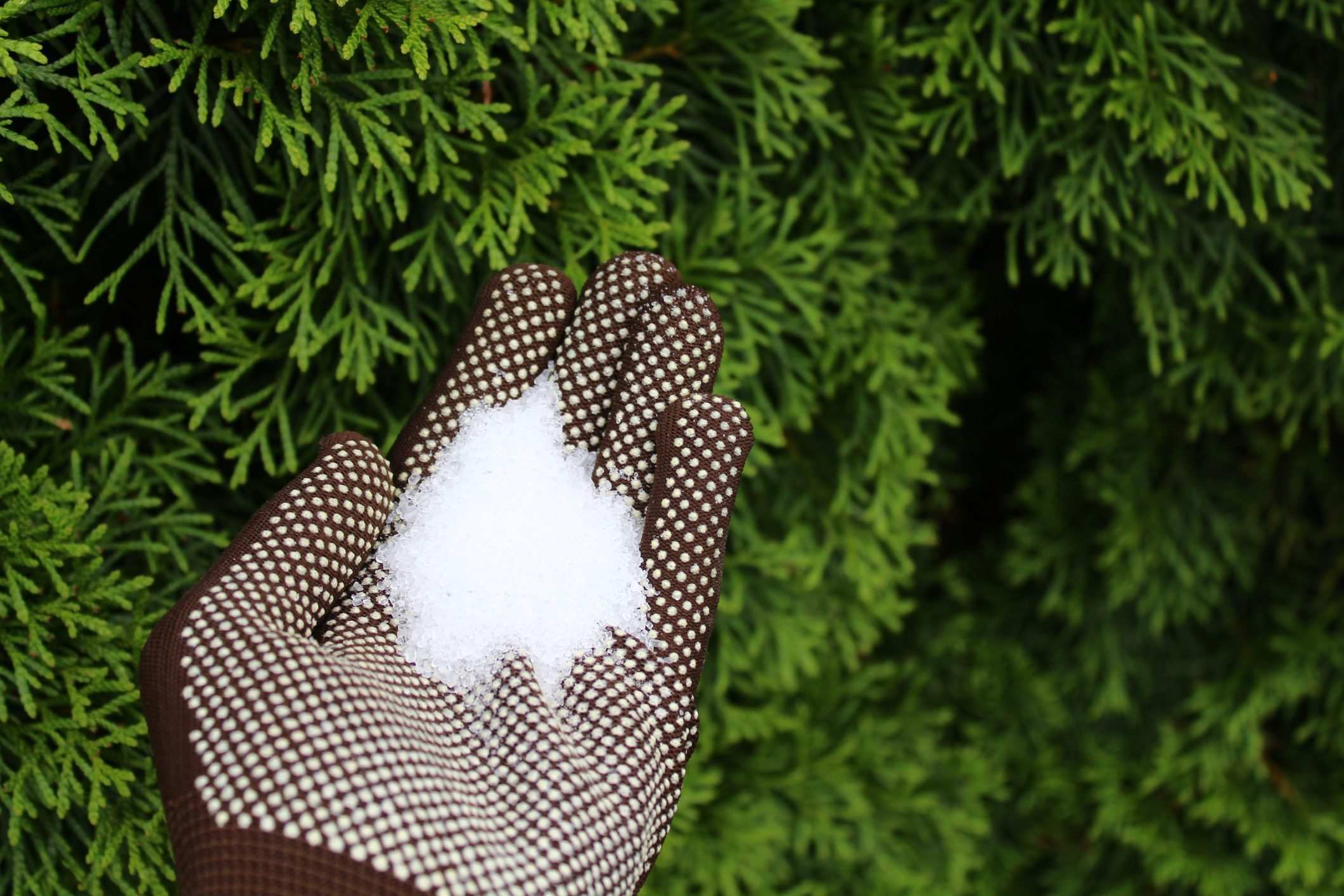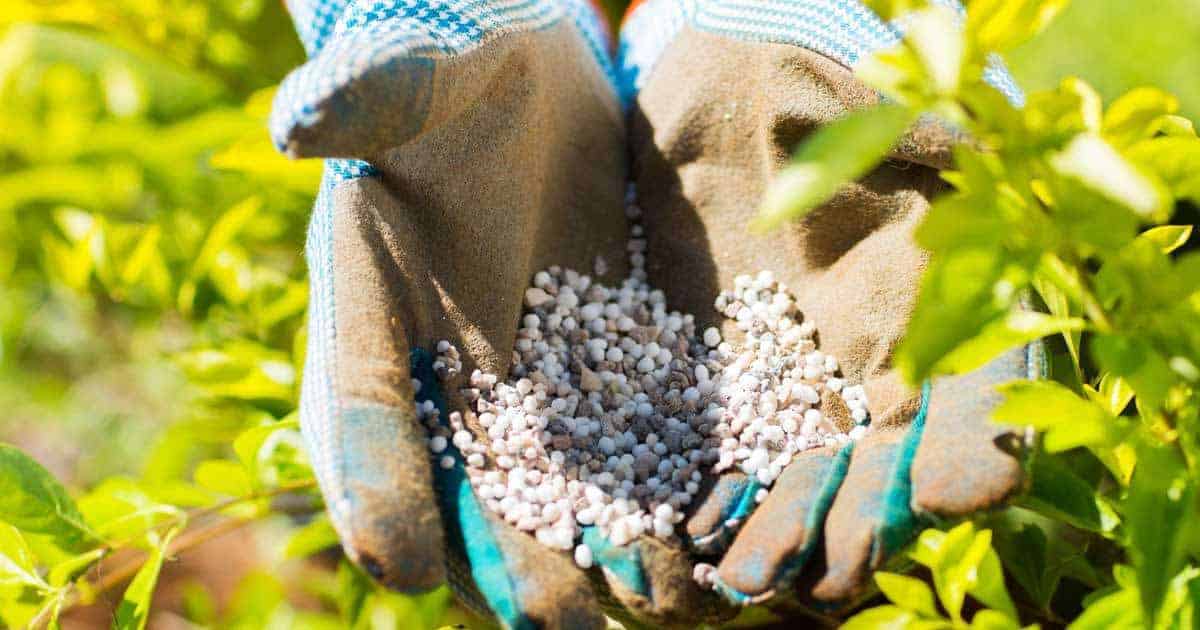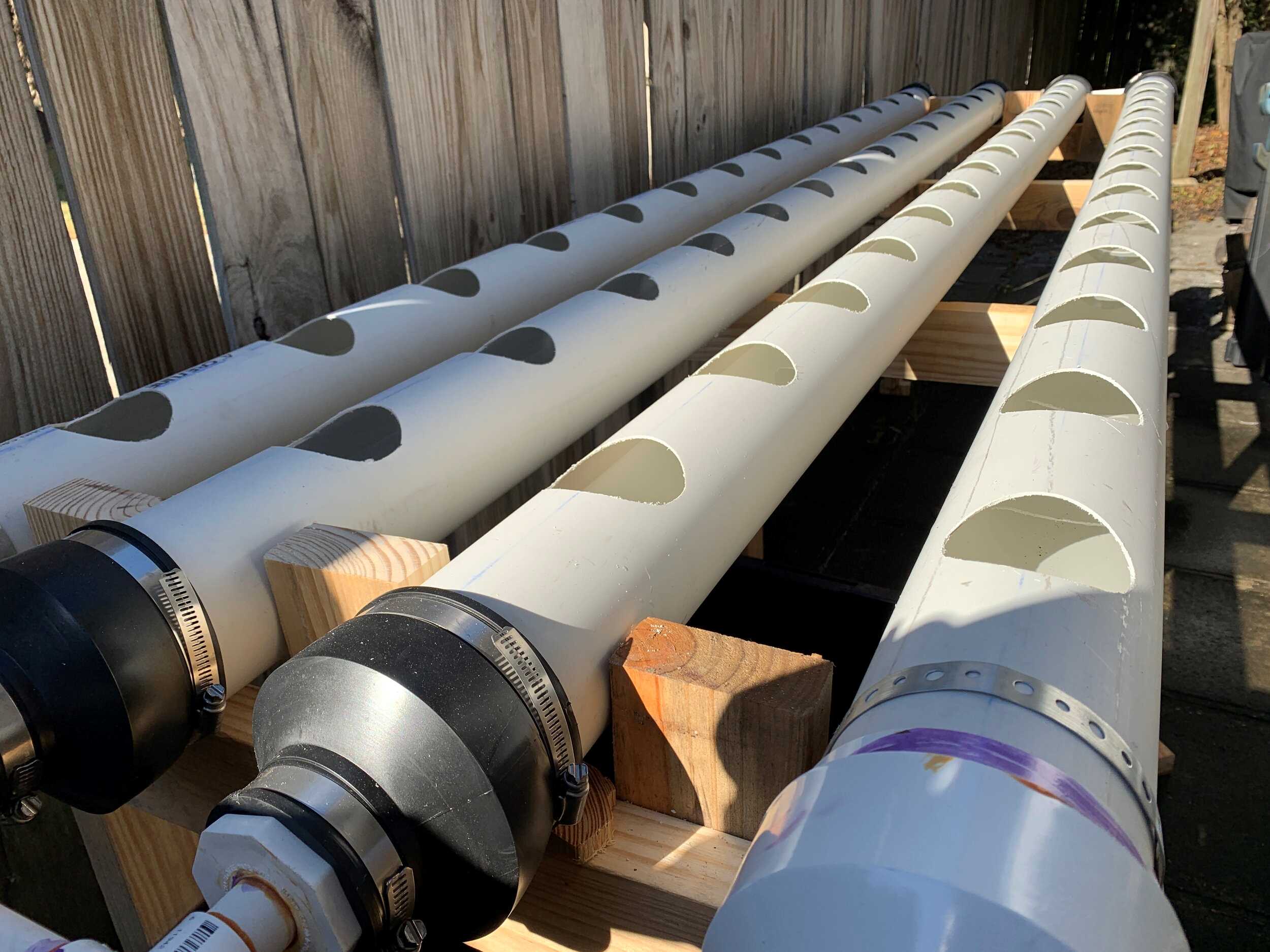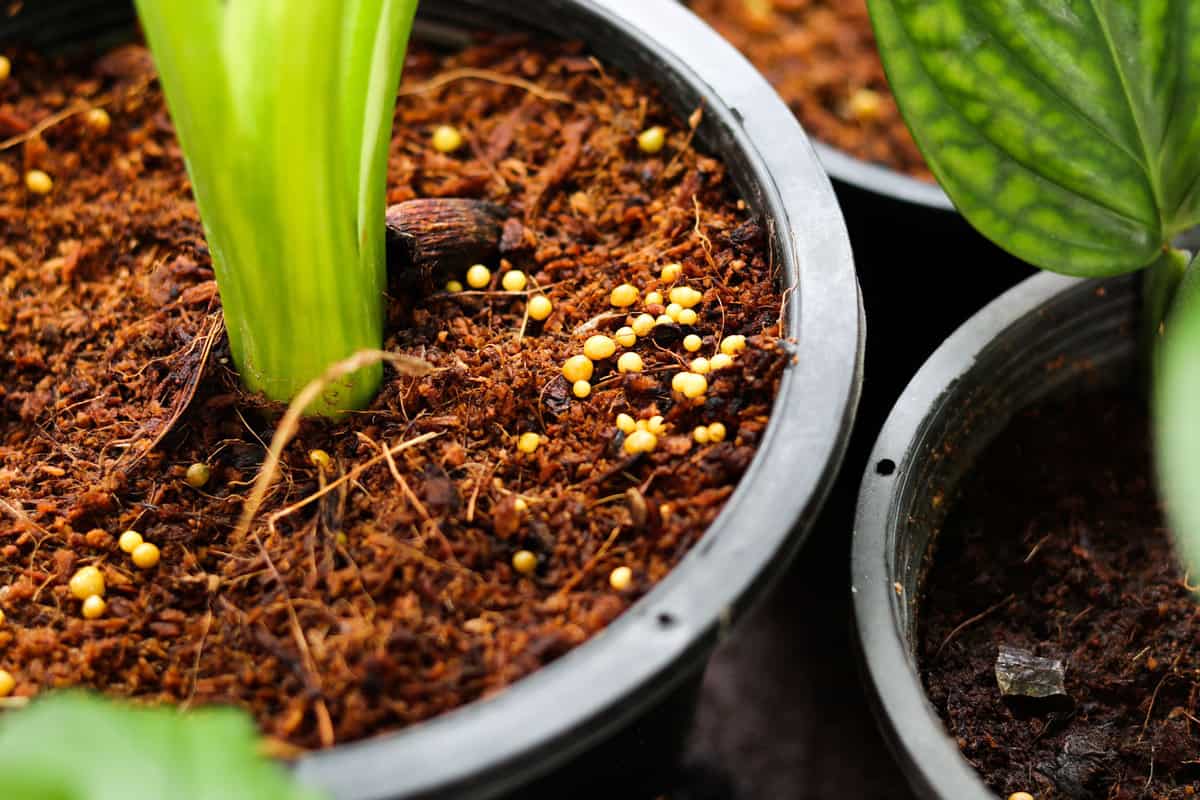Home>Gardening Tips and Tricks>Eco-Friendly Gardening>How To Use Coco Coir In Hydroponics
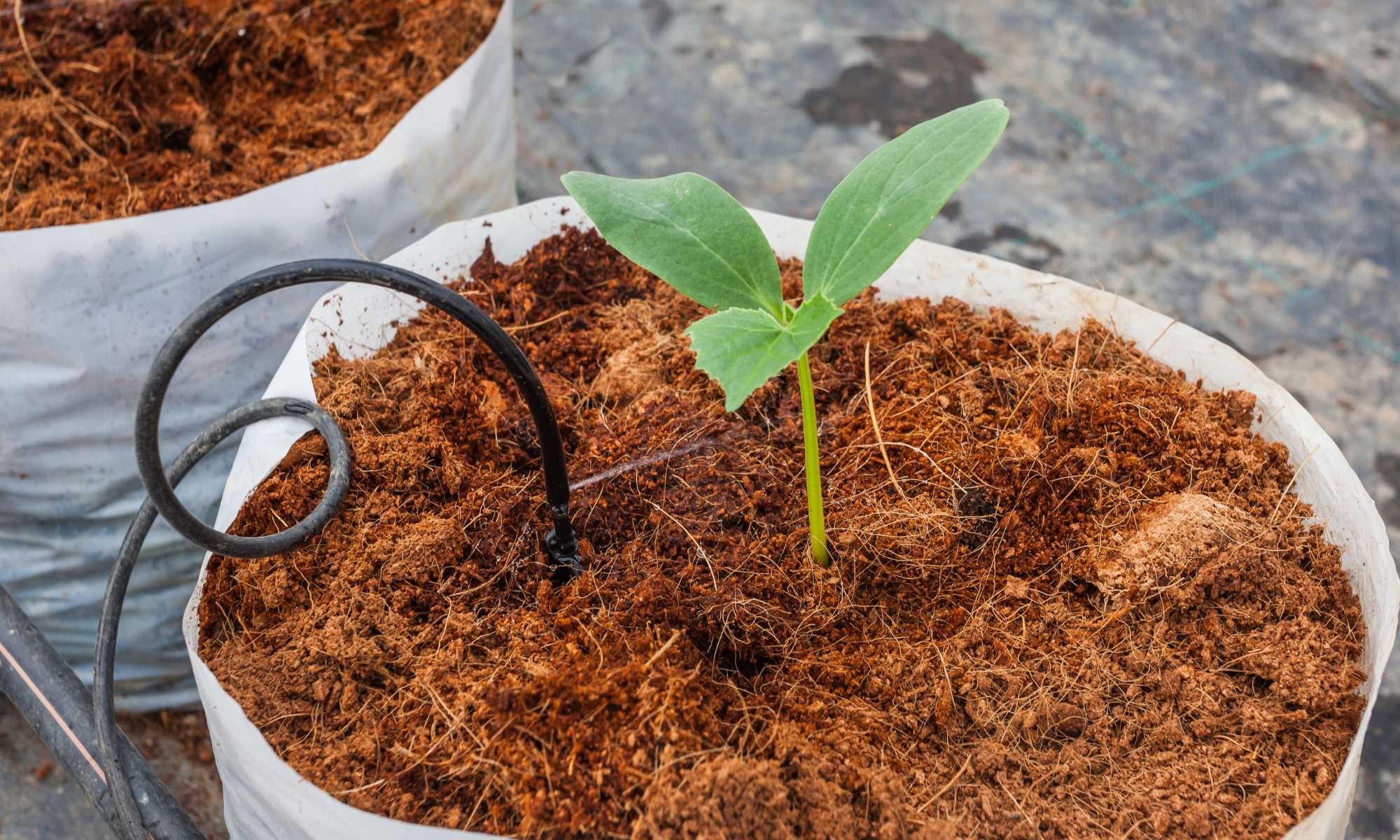

Eco-Friendly Gardening
How To Use Coco Coir In Hydroponics
Published: September 23, 2023
Discover the benefits of using eco-friendly coco coir in hydroponics for your gardening needs. Learn how to incorporate this sustainable alternative for healthy, thriving plants.
(Many of the links in this article redirect to a specific reviewed product. Your purchase of these products through affiliate links helps to generate commission for Chicagolandgardening.com, at no extra cost. Learn more)
Table of Contents
- Introduction
- What is Coco Coir?
- Advantages of Coco Coir in Hydroponics
- Types of Coco Coir
- Preparing Coco Coir for Hydroponics
- Choosing the Right Coco Coir for Your Hydroponic System
- Using Coco Coir as a Growing Medium in Hydroponics
- Nutrient Management with Coco Coir
- Maintaining Coco Coir in Hydroponics
- Common Mistakes to Avoid When Using Coco Coir in Hydroponics
- Conclusion
Introduction
Welcome to the wonderful world of eco-friendly gardening! If you’re passionate about sustainable living and looking for a way to incorporate that into your gardening practices, then eco-friendly gardening is the perfect choice for you. One of the key aspects of eco-friendly gardening is using natural and sustainable methods for cultivating plants, and one method that has gained popularity is hydroponics.
Hydroponics is a soil-less gardening technique that allows you to grow plants by directly providing them with all the essential nutrients they need through a water-based solution. It eliminates the need for traditional soil and offers greater control over the growing conditions, resulting in faster growth and higher yields.
When it comes to hydroponics, there are various growing mediums available, and one of the most popular and environmentally friendly options is coco coir. Coco coir is a versatile and renewable byproduct made from the fibers of coconut husks. It has gained recognition among eco-conscious gardeners for its numerous benefits in hydroponics.
In this article, we will explore the advantages of using coco coir in hydroponics, the different types of coco coir, how to prepare and choose the right coco coir for your hydroponic system, and the best practices for using coco coir as a growing medium. We will also delve into nutrient management and maintenance tips to ensure optimal plant growth and sustainable gardening practices.
So, whether you’re a beginner or an experienced gardener looking to adopt more environmentally friendly techniques, this article will guide you through the world of eco-friendly gardening using coco coir in hydroponics. Get ready to learn and elevate your gardening game to a whole new sustainable level!
What is Coco Coir?
Coco coir, also known as coco peat or coco fiber, is a natural and sustainable growing medium derived from the husks of coconuts. It is a byproduct of the coconut industry, making it an environmentally friendly choice for gardening.
Coco coir has a fibrous texture and a high water-holding capacity, which makes it an excellent alternative to traditional soil. It is widely used in hydroponics due to its ability to retain moisture while also providing good drainage, ensuring the roots have access to oxygen.
One of the advantages of using coco coir is that it is a renewable resource. The processing of coconut husks into coco coir involves soaking them in water, followed by the removal of the fibers. The remaining coconut coir is then dried and processed into various forms for gardening use.
Coco coir is available in different forms, including bricks, blocks, or loose fibers. These forms can be rehydrated and expanded before use, making coco coir easy to handle and transport.
Coco coir has a neutral pH level, which means it does not have a significant impact on the acidity or alkalinity of the nutrient solution. This allows for better control over the pH levels in hydroponic systems, ensuring optimal nutrient uptake by the plants.
Furthermore, coco coir is naturally resistant to pests, diseases, and weed growth, reducing the need for harmful chemical treatments. This makes it a safe and organic choice for eco-friendly gardening.
Overall, coco coir is a versatile and sustainable growing medium that offers numerous benefits for hydroponic gardening. Its eco-friendly nature, water retention properties, excellent drainage, and pH neutrality make it an ideal choice for those looking to incorporate more sustainable and natural practices into their gardening routines.
Advantages of Coco Coir in Hydroponics
Using coco coir as a growing medium in hydroponics offers several advantages that make it a popular choice among eco-conscious gardeners. Here are some of the key benefits:
- Excellent Water Retention: Coco coir has an exceptional water-holding capacity, allowing it to retain moisture for extended periods. This property ensures that plant roots have consistent access to water, preventing drought stress and promoting healthy growth.
- Optimal Drainage: While coco coir retains moisture, it also provides excellent drainage. The fibrous structure of coco coir promotes the passage of excess water, preventing waterlogged roots and root rot. This balanced water retention and drainage help maintain the optimal moisture levels for plant health.
- Enhanced Nutrient Uptake: Coco coir has a unique cation exchange capacity, meaning it can hold and release nutrients efficiently. This characteristic allows plants to access essential nutrients more effectively, leading to improved nutrient uptake, enhanced growth, and higher yields.
- Neutral pH: Coco coir has a neutral pH level, which is favorable for hydroponic systems. It helps stabilize the pH of the nutrient solution, ensuring proper nutrient availability to the plants. This pH neutrality reduces the need for frequent pH adjustments, making the maintenance of hydroponic systems more convenient.
- Environmentally Friendly: Coco coir is a renewable and sustainable resource that is a byproduct of the coconut industry. By using coco coir, you are promoting the utilization of waste material and reducing the dependency on non-renewable resources. This eco-friendly approach aligns with the principles of sustainable gardening.
- Pest and Disease Resistance: Coco coir naturally resists pests, including nematodes, fungus gnats, and other detrimental organisms. Its physical structure and chemical properties make it inhospitable for microbes and insects, reducing the risk of plant diseases and minimizing the need for chemical pesticides.
- Longevity and Reusability: Coco coir has a long lifespan and can be reused multiple times in hydroponics. After each crop cycle, the coco coir can be rejuvenated by flushing it with water or using microbial treatments to remove any accumulated salts or residues. This reusability makes coco coir a cost-effective and sustainable option.
Incorporating coco coir into your hydroponic system not only benefits your plants but also contributes to a more sustainable and environmentally friendly approach to gardening. Its water retention, drainage capabilities, optimal nutrient uptake, pH neutrality, pest resistance, and longevity make it an excellent choice for eco-friendly hydroponics.
Types of Coco Coir
Coco coir comes in various forms, each with its own characteristics and uses. Understanding the different types of coco coir can help you choose the most suitable option for your hydroponic system. Here are the main types of coco coir:
- Coco Coir Fiber: Coco coir fiber is the most common form of coco coir. It consists of long, fibrous strands that provide excellent air circulation and drainage. This type is often used in growing mediums to improve aeration and water retention. It is suitable for hydroponic systems that require good oxygenation and root development.
- Coco Coir Peat: Coco coir peat, also known as coco peat or coir dust, is finely ground coco coir. It has a fluffy texture and high water-holding capacity. Coco coir peat is used to improve moisture retention and provide a stable growing environment for plants. It is commonly added to potting mixes or used as a standalone growing medium for hydroponics.
- Coco Coir Chips: Coco coir chips are larger-sized pieces of coco coir. They provide good aeration and drainage, making them suitable for plants that need a drier root zone. Coco coir chips are commonly used in hydroponic systems, particularly for orchids and other epiphytic plants that naturally grow on tree bark or other coarse substrates.
- Coco Coir Bricks and Blocks: Coco coir bricks and blocks are compacted forms of coco coir that expand when hydrated. They are convenient for transportation and storage. To use them, simply soak the brick or block in water until it expands in size. This type of coco coir is often used in potting mixes or as a standalone growing medium in hydroponics.
- Coco Coir Mats: Coco coir mats are mats made from compressed coco coir fibers. They provide an excellent growing surface for hydroponic systems, especially for delicate seedlings or microgreens. These mats can be cut to size and placed in trays or containers, allowing for easy planting and water absorption.
- Mixed Coco Coir Products: Some coco coir products combine different types, such as a mixture of coco coir peat and fibers. These blended products aim to offer a balance of water retention, drainage, and aeration. They provide flexibility in selecting a coco coir medium that suits the specific requirements of your plants.
When choosing coco coir for your hydroponic system, consider the specific needs of your plants, such as their water requirements, root aeration, and the intended growth stage. Experimenting with different forms of coco coir can help you find the ideal medium for your plants’ optimal growth and overall performance.
Preparing Coco Coir for Hydroponics
Before using coco coir as a growing medium in hydroponics, it is essential to properly prepare it to ensure optimal plant growth and performance. Here are the steps to prepare coco coir for hydroponics:
- Rehydration: If you are using coco coir bricks or blocks, start by placing them in a large container or bucket. Add water and let them soak for a few hours or overnight until they expand and become moist. Gently break apart the coir to fluff it up and ensure even hydration.
- Drainage: After rehydration, it’s important to ensure proper drainage. Squeeze out any excess water from the coco coir to prevent waterlogging. A well-draining coco coir medium will promote healthy root growth and prevent the risk of root rot.
- Buffering: Coco coir has a natural tendency to release salts, which can affect the nutrient balance in hydroponic systems. To remove excess salts, you can flush the coir with water or a nutrient solution before use. This process, known as buffering, helps create a clean and stable foundation for your plants.
- pH Adjustment: While coco coir has a neutral pH, it’s a good practice to check and adjust the pH level of the nutrient solution before introducing it to the hydroponic system. The ideal pH range for most plants is between 5.5 and 6.5. Use a pH testing kit or meter to monitor and make necessary adjustments.
- Pre-Planting Preparation: Prior to planting, ensure that the coco coir has a loose and fluffy texture. Break up any clumps or compressed areas to create an even texture throughout the growing medium. This will provide optimal air circulation and water distribution for the roots.
- Preventing Dryness: Coco coir has a tendency to dry out quickly, especially in arid environments or with high air circulation. To prevent excessive drying, maintain a consistent moisture level by regular monitoring and appropriate watering techniques. Consider using a moisture meter to gauge the moisture content of the coir.
By following these steps, you can effectively prepare coco coir for hydroponics. Proper rehydration, drainage, buffering, pH adjustment, and pre-planting preparation will create an optimal environment for your plants to thrive in the hydroponic system. Remember to monitor moisture levels and make adjustments as needed to ensure consistent and healthy plant growth.
Choosing the Right Coco Coir for Your Hydroponic System
When it comes to choosing the right coco coir for your hydroponic system, there are a few factors to consider. The right coco coir will depend on the specific needs of your plants and the type of hydroponic system you are using. Here are some important considerations:
- Form: Decide on the form of coco coir that best suits your needs. Options include coco coir fiber, coco coir peat, coco coir chips, bricks or blocks, and coco coir mats. Consider factors such as water retention, drainage, aeration, and ease of use when choosing the appropriate form for your hydroponic system.
- Purity: Ensure that the coco coir you choose is clean and free from contaminants, such as excessive salts or chemicals. Look for coir that has been washed and buffered to remove impurities. This will prevent nutrient imbalances and potential harm to your plants in the hydroponic system.
- Salt Content: Check the salt content of the coco coir, as high salt levels can affect plant health and growth. Lower salt content coco coir is generally preferred. Be sure to read product labels or inquire about salt levels before purchasing.
- Quality: Look for high-quality coco coir that is well-processed and has consistent texture and appearance. Avoid coco coir that appears excessively dusty or has a harsh texture, as this may indicate poor quality or improper processing.
- Source: Consider the source of the coco coir. Ideally, choose coco coir that is sourced from organic and sustainable coconut farms. This ensures that the coir has been produced in an environmentally friendly manner, without the use of harmful chemicals or pesticides.
- Availability: Determine the availability of the coco coir in your area. It is recommended to choose a coco coir brand or supplier that is readily accessible, ensuring that you can consistently source the coir for your hydroponic system.
It’s important to note that different plants may have specific requirements when it comes to coco coir. Some plants may thrive with high-water retention coco coir, while others may need a more well-draining medium. Consider the water needs, root structure, and growth habits of your plants when selecting the appropriate coco coir.
Lastly, don’t be afraid to experiment and adjust your choice of coco coir based on your plants’ performance. Observing how your plants respond to different coco coir types will help you fine-tune your hydroponic system for optimal growth and overall success.
Using Coco Coir as a Growing Medium in Hydroponics
Coco coir is an excellent choice as a growing medium in hydroponics due to its unique properties and environmental benefits. Here’s how to use coco coir effectively in your hydroponic system:
- Pot or Container Selection: Choose pots or containers that are suitable for the size of your plants and provide adequate drainage. Coco coir works well in various hydroponic systems, including deep water culture, nutrient film technique, and drip irrigation.
- Fill the Growing Containers: Fill your growing containers with pre-moistened coco coir. Ensure that the coir is evenly distributed and packed lightly to allow for proper air circulation and water flow through the medium.
- Planting: Make a hole or indentation in the coco coir and carefully place the plant into the hole. Gently press the coir around the base of the plant to secure it in place. Leave some space between the top of the coir and the rim of the container for watering purposes.
- Irrigation: Monitor the moisture levels in the coco coir and water accordingly. Coco coir tends to dry out faster than traditional soil, so regular watering is crucial. Avoid overwatering, as it can lead to waterlogged roots. Ensure adequate drainage to prevent excess moisture buildup.
- Nutrient Solution: Coco coir has a neutral pH, so you will need to provide your plants with a balanced nutrient solution. Use a hydroponic nutrient mix specifically formulated for coco coir, as it will contain the essential elements needed for plant growth. Follow the instructions on the nutrient solution package for proper dilution and application.
- Feeding Schedule: Establish a feeding schedule for your plants based on their growth stage and the nutrient requirements of the specific plant species. Coco coir has a high cation exchange capacity, which means it can retain and release nutrients effectively. However, regular monitoring and adjustments may be needed to maintain nutrient levels based on plant needs.
- Maintenance: Regularly monitor the pH and nutrient levels in the hydroponic system. Check for any signs of nutrient deficiencies or excesses, and make necessary adjustments to promote healthy plant growth. Inspect the coco coir for any signs of disease or pest infestation, and take appropriate measures to address them promptly.
- Reusing Coco Coir: After each crop cycle, coco coir can be reused to reduce waste and maximize sustainability. Flush the coir with water or use microbial treatments to remove any accumulated salts or residues. Rehydrating, buffering, and reusing the coco coir can help maintain its optimal properties.
Using coco coir as a growing medium in hydroponics offers excellent water retention, drainage, and nutrient availability for plants. With proper irrigation, nutrient management, and maintenance, coco coir can provide a suitable environment for your plants to thrive and produce healthy and abundant harvests in your hydroponic system.
Nutrient Management with Coco Coir
Nutrient management is a critical aspect of growing plants in hydroponics, and it is no different when using coco coir as the growing medium. Here are some key considerations for effective nutrient management with coco coir:
- Use a Nutrient Solution Specifically for Coco Coir: Coco coir has a unique ability to retain and release nutrients, so it’s essential to use a hydroponic nutrient solution specifically formulated for coco coir. These solutions contain the right balance of macro and micronutrients that coco coir-bound plants require for optimal growth.
- Monitor and Adjust pH Levels: Coco coir has a neutral pH, but over time, it may become slightly acidic due to the release of organic compounds. Regularly monitor the pH level of the nutrient solution and adjust it to the appropriate range (usually between 5.5 and 6.5) using pH up or down solutions.
- Check and Adjust Nutrient Strength: Measure the electrical conductivity (EC) or total dissolved solids (TDS) of the nutrient solution to determine its strength or nutrient concentration. Coco coir has a high cation exchange capacity, which means it can retain and release nutrients effectively. Adjust the nutrient strength as needed based on the growth stage and specific requirements of your plants.
- Implement a Feeding Schedule: Coco coir-bound plants benefit from a consistent feeding schedule. Develop a schedule based on your specific plants’ needs and growth stage. Start with a lighter nutrient concentration in the early stages and gradually increase it to meet the increasing nutrient demands of the plants as they mature.
- Monitor Nutrient Uptake and Deficiencies: Regularly inspect your plants for any signs of nutrient deficiencies or excesses. Common nutrient deficiencies in coco coir include calcium, magnesium, and iron. Look for yellowing or stunted growth as indicators of nutrient issues. Address deficiencies promptly by adjusting the nutrient solution or using targeted nutrient supplements.
- Flushing: Periodically flush the coco coir and the hydroponic system. Flushing helps remove any accumulated salts or nutrient residues that may hinder nutrient uptake or cause imbalances. Use clean, pH-balanced water to flush the coco coir, ensuring thorough rinsing before restarting the nutrient feeding cycle.
- Maintain Proper Watering Practices: Overwatering or underwatering can both have negative effects on nutrient management in coco coir. Avoid waterlogging the coir by providing proper drainage and allowing the coir to partially dry between watering sessions. Maintain consistent moisture levels to ensure effective nutrient uptake by the plant roots.
- Follow Manufacturer Guidelines: Each brand or supplier may have specific recommendations for nutrient management with coco coir. Read the instructions provided with the coco coir product and the nutrient solutions. Follow the recommended feeding guidelines and adjust as needed to optimize plant health and growth.
By implementing proper nutrient management practices with coco coir, you can provide your plants with the optimal balance of nutrients, promote healthy growth, and maximize the benefits of using coco coir as a growing medium in your hydroponic system.
Maintaining Coco Coir in Hydroponics
Maintaining coco coir in hydroponics is crucial to ensure the long-term health and performance of your plants. Proper maintenance practices help preserve the qualities of coco coir and create an optimal growing environment. Here are some essential tips for maintaining coco coir in hydroponics:
- Monitor Moisture Levels: Regularly check the moisture levels of the coco coir to prevent over or underwatering. Coco coir should be kept consistently moist, but not waterlogged or excessively dry. Adjust your watering schedule as needed based on the specific requirements of your plants and the environmental conditions.
- Ensure Proper Drainage: Good drainage is essential for coco coir-based hydroponic systems. Proper drainage prevents the roots from sitting in stagnant water, reducing the risk of root rot. Check that your growing containers have adequate drainage holes and that excess water can freely escape from the system.
- Regularly Check pH Levels: Monitor the pH levels of the nutrient solution and the coco coir medium. pH fluctuations can impact nutrient availability and uptake. Aim for a slightly acidic to neutral pH range of 5.5 to 6.5. Adjust the pH as needed using pH up or down solutions to maintain an optimal growing environment.
- Maintain Nutrient Balance: Regularly monitor the nutrient levels in the hydroponic system to ensure a balanced nutrient solution. Check the electrical conductivity (EC) or total dissolved solids (TDS) to gauge nutrient strength. Keeping a balanced nutrient solution helps prevent deficiencies or toxicities for your plants.
- Inspect for Pests and Diseases: Regularly inspect the coco coir and plant foliage for any signs of pests or diseases. Coco coir is naturally resistant to pests and diseases, but it is not immune. Look for pests like fungus gnats or signs of fungal or bacterial infections. Take immediate action if pests or diseases are detected, using appropriate organic pest control methods.
- Flush the Coco Coir: Periodically flushing the coco coir with fresh, pH-balanced water helps remove any accumulated salts or nutrient residues. Flushing helps prevent nutrient imbalances and salt buildup, maintaining optimal nutrient availability for the plants. Ensure thorough flushing and drainage before restarting the nutrient feeding cycle.
- Regular Cleaning and Sterilization: Clean your hydroponic system and growing containers thoroughly between crop cycles. Proper cleaning and sterilization help prevent the buildup of harmful pathogens or residues. Use mild household cleaners or hydrogen peroxide to sanitize the system components, ensuring a clean and healthy growing environment.
- Replace Coco Coir Periodically: Over time, coco coir may break down, lose its structure, or become compacted. It is advisable to replace the coco coir after a certain number of crop cycles or when its quality deteriorates. Replacing the coco coir ensures optimal plant growth and prevents potential issues associated with aged or degraded medium.
By following these maintenance practices, you can ensure the longevity and effectiveness of coco coir as a growing medium in your hydroponic system. Regular monitoring, proper drainage, maintaining nutrient balance, and periodic cleaning are vital for the health and success of your plants in coco coir-based hydroponics.
Common Mistakes to Avoid When Using Coco Coir in Hydroponics
While coco coir is a versatile and beneficial growing medium in hydroponics, there are some common mistakes that gardeners should be aware of and avoid. By being aware of these mistakes, you can ensure the optimal health and growth of your plants. Here are some common mistakes to avoid when using coco coir in hydroponics:
- Overwatering: One of the most common mistakes is overwatering the coco coir. Coco coir has excellent water-holding capacity, but plants still need oxygen to thrive. Overwatering can lead to waterlogged roots and the risk of root rot. Ensure proper drainage and only water when the coco coir has partially dried out.
- Underwatering: On the other hand, underwatering can also be detrimental to your plants. Coco coir tends to dry out faster than traditional soil, so it’s important to monitor moisture levels regularly and water accordingly. Avoid allowing the coco coir to completely dry out, as it can lead to stress and nutrient imbalances for your plants.
- Ignoring pH Levels: Neglecting to monitor and adjust pH levels can impact nutrient availability and uptake by the plants. Coco coir has a neutral pH, but over time, it may become slightly acidic. Regularly check and adjust the pH of the nutrient solution to maintain the optimal range for plant growth (between 5.5 and 6.5).
- Not Buffering the Coco Coir: Coco coir has a natural tendency to release salts, which can affect the nutrient balance in the hydroponic system. Failure to buffer the coco coir before use can result in nutrient imbalances and hinder plant growth. Always soak and flush the coco coir to remove any excess salts before planting.
- Neglecting Nutrient Management: Proper nutrient management is essential when using coco coir in hydroponics. Neglecting to provide the appropriate balance of nutrients or failing to adjust nutrient concentration according to plant needs can lead to nutrient deficiencies or toxicities. Monitor nutrient levels regularly and adjust accordingly for optimal plant growth.
- Using Poor Quality or Contaminated Coco Coir: Using low-quality or contaminated coco coir can negatively impact plant health. Ensure that the coco coir you purchase is clean, well-processed, and free from contaminants. Avoid coco coir that appears excessively dusty or has a harsh texture, as these can indicate poor quality or improper processing.
- Not Flushing or Replacing Coco Coir: Failing to flush the coco coir periodically or replacing it after a certain number of crop cycles can result in nutrient imbalances and salt buildup. Flushing helps remove accumulated salts and residue, while replacing coco coir ensures optimal plant growth and prevents potential issues associated with aged or degraded medium.
- Skipping Pest and Disease Prevention: Although coco coir is naturally resistant to pests and diseases, neglecting to implement proper pest and disease prevention measures can still lead to infestations or infections. Regularly inspect the coco coir and plants for any signs of pests or diseases, and promptly address any issues with targeted organic pest control methods.
By avoiding these common mistakes, you can maximize the benefits of coco coir as a growing medium in hydroponics. Proper watering, pH management, nutrient management, and regular maintenance are key to ensuring the success of your plants and achieving optimal growth in your hydroponic system.
Conclusion
Incorporating coco coir as a growing medium in hydroponics offers numerous benefits for eco-friendly and sustainable gardening practices. Its excellent water retention, optimal drainage, and pH-neutral properties make it an ideal choice for nurturing plants in hydroponic systems.
Coco coir provides a renewable and environmentally friendly alternative to traditional soil-based gardening. Its ability to retain and release nutrients efficiently, resistance to pests and diseases, and long lifespan make it a versatile option for a wide range of plants and hydroponic setups.
When using coco coir in hydroponics, it is important to properly prepare and choose the right type for your specific needs. Rehydrating, buffering, and balancing the nutrient solution are crucial steps in ensuring that your plants have a healthy and thriving growing environment.
Regular monitoring of pH and nutrient levels, as well as proper watering and maintenance practices, will help maximize the benefits of coco coir as a growing medium. Avoiding common mistakes such as overwatering, neglecting pH levels, and using poor-quality coco coir will contribute to the success of your hydroponic system.
As you embark on your eco-friendly gardening journey, remember that coco coir is just one piece of the puzzle. Combine it with other sustainable practices, such as using organic nutrients, implementing efficient irrigation techniques, and minimizing waste. By doing so, you can create a truly eco-friendly and rewarding gardening experience.
So, dive into the world of eco-friendly gardening with coco coir in hydroponics. Explore the possibilities, experiment with different coco coir types, and witness the transformation of your plants as they thrive in this sustainable and versatile growing medium. Happy gardening!
